 |
| Absurdist sensibilities, Mucha and a silhouette in Praha. |
We woke up well rested after a long night’s sleep. We’d spent our first full day in Prague at
the Kafka museum, making our way back to our apartment at the Old Town Square
where we spent the afternoon reading, writing, and looking out at the city from
our patio. There we’d stay for the
evening.
The next day we made our way out, looking at the streets and
shops of the sparkling Prague, simultaneously attracted and repulsed by the
commodity fetish which seems to have grasped the city over the last quarter century. One can purchase anything here. But none of this came easily.
The art, spender and history
is still very much a part of this space.
Prague is teeming with history and art, museums and green spaces. We all fall in love with Maria Mucha, the Moravian
artist, whose posters and photographs capture a feeling for modern Arts Nouveau.
His photograph of Paul Gauguin is whimsical and funny, his posters and
paintings speak to both a lush, whimsical feeling and a sensibility of freedom.
There is nothing more fun than going go a museum together and falling in love
with the arts, followed by a big lunch of soup and a few Czech beers. Caroline
teaches me I need to put the beer mat out when I want a pint and then put it on
top of the beer when I’m done. The girls
love the schnitzel, soup and sausage.
After lunch is always the crisis of the afternoon. But we’re all feeling good. So we wander to Wenceslas Square. I am always
moved to see the square there, remembering the protests of November 1989, when
people pushed back the communist rule, and fifty years prior to that students
stood up against the Nazis, before they were sent to concentration camps. Watching that my sophomore year in college, I
saw that people could change history if they, if we acted. I always associate Praha with that feeling.
We zig left, walking the long streets, in awe of the beauty
of the streets, meandering into an old part where people are napping, sun
bathing. Number two works on her
gymnastics; I do yoga. A group of kids
play a piano in the distance. The clouds
seem to dance above. The trees feel
timeless. Its just a spectacular city.
We keep on walking, with no direction, stumbling into the Crypt
outside of the Orthodox Church of St Cyril and St Methodius in Ressolva Street
in the Prague New Town. Here, the
members of the Czech resistance hid out after successfully assassinating
Reinhard Heydrich, the Nazi leading the occupation of Czechoslovakia. The resisters killed themselves inside
instead of let the Nazis find them. The
Third Reich responded killing thousands, including liquidating a whole
town. But the world saw that the Czech’s
were ready to respond and oppose the Nazis. Heydrich was the highest-ranking
German killed by the resistance in the war.
We kept walking, toward the water, taking in the Dancing
Building on the Rasinovo Embankment and gradually walking over the Jiraskuv bridge
to the Mala Strana. We’d play in the
parks along the water for the rest of the afternoon, kids playing in the distance,
people hanging out enjoying life here in this exquisite town. The girls napped
and played. Number two did more gymnastics and we kept walking to the
Castle. Up and up and up we walked
taking in more and more views, until we found ourselves greeting Thomas
Masaryk, the first president of the independent country in 1918, almost a
hundred years prior. Looming tall was
old St Wenceslas.
A band with a cello was playing punk rock on the bridge as we walked back.
Prague is a city of dreams people have been able to make
real, even when hopes of “socialism with a human face” faded, the ideas of
democracy and freedom persevered.
“Its simply the most beautiful city I have ever seen,”
Caroline mused. She remembered
discovering it in December of 1989. It
seemed a secret jewel, she had discovered.
Now the world knows about her.
But it does not diminish her beauty.
Not in the least.
 |
| A day in Praha. |












































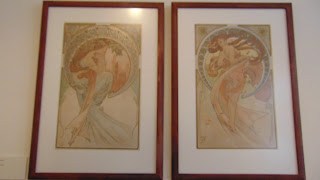








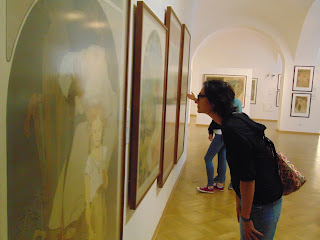

































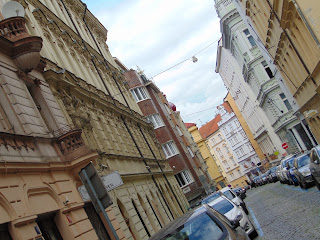

















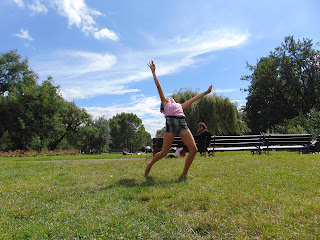


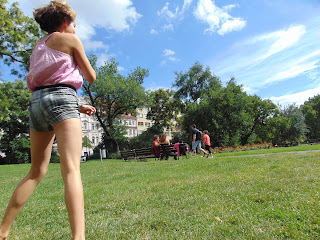
















































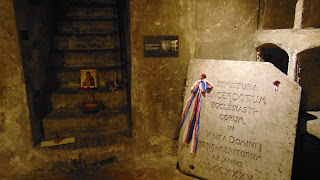



























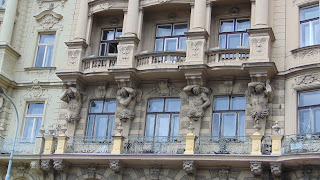
























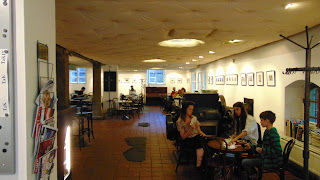






















































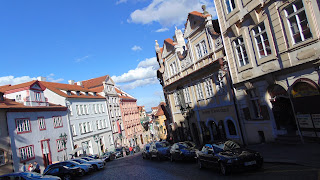





























No comments:
Post a Comment